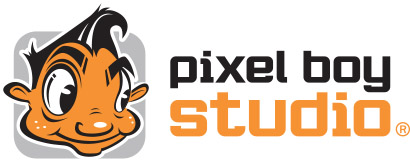10 Points for Self-Publishers Hiring an Illustrator
1) Are You Attempting to Contact a Publishing Firm with Your Concept?
If you are trying to get a publisher to view your book, then typically most publishers only needthe story/manuscript. Some authors create the cover art and/or character sketches to help sell their story concept. In the end, the publisher will most likely hire their own illustrator. Presenting an unpublished writer and illustrator as one package will increase your chances of rejection. If the manuscript misses the mark, so does the illustration (and vice-versa). I've heard of larger publishing firms having rooms stacked with manuscripts. Some publishers receive thousands every year.
2) Create a Project Brief
You don't necessarily need to summarize your storybook idea (it helps though). But give as much information about the book as possible. An artist is not going to give you an accurate estimate if the basic information is missing. Age group? Page size? Number of spreads/pages? Print run (how many printed copies)? How many illustrations? And are the illustrations quarter-page, half-page or full-page size? Will the cover be illustrated and if so, is the artist designing the layout and typography? Will the artist be designing the interior pages as well?
3) Expected Costs on an Estimate
The estimate will include rough sketches based on your art direction and manuscript, one round of minor alterations to the sketches and the final artwork. Additional alterations are usually billed at an hourly rate. Being prepared and having solid direction will keep your budget closer to the estimated cost. If the expenses happen to go beyond the estimated cost, then the artist should notify you ASAP and get your approval to move forward. The estimate is typically good for 90 days. An experienced artist may charge a publisher/self-publisher $500-$2000 for the cover and $500-$1500 per spread. Quarter-page, half-page and spot illustrations are at a lower fee. Designing the book cover and interior pages may have an additional cost--so keep this in mind. All these figures come from the Graphic Artist's Guild for Pricing & Ethical Guidelines handbook. Other artists may vary. An advance payment of half the total cost may be required before the artist begins your project. It can take an artist one to three months of solid time to illustrate a book depending on the detail needed. Picture book projects are time consuming and usually an artist can't take on other projects--so there either should be healthy compensation or creative freedom with little hassle. This includes minor alterations--if any. Keep this in mind.
4) What Do You Mean by "Rights and Licensing"?
You are purchasing the "right" to reproduce the artwork. Your estimate is based on the specific "rights" you purchase. Once the final artwork is delivered and the final payment is paid then you are legally "licensed" to reproduce the illustrations. Rights are based on the print run, the geographic area (regional, national or international) and the number of years you want to use the illustrations. You have an "exclusive" license which allows only you to use the image and "non-exclusive" license which can be less expensive with a possible time-frame, specific market and region. Also, expect to talk about 2-4% royalties with your artist.
5) What if I Need to Cancel My Project?
If you need to cancel your project, then the artist retains the ownership of the all the rights of copyright and the original artwork--including sketches and any other preliminary materials. Typically, a client will pay the illustrator 25% of the agreed upon estimated fee once the initial work started. 50% if the project is canceled after preliminary sketches are completed. 75% once color finals have been started and 100% if canceled after completion of finished art.
6) How is an Illustrator Usually Paid?
Every artist is different. When working with a new client, most illustrators will receive an upfront payment of one-quarter to half of the estimated costs. PayPal seems to be a preferred method of payment.
7) When is Payment Due?
Payment is due within 30 days of receipt of invoice. Usually, a 1.5% monthly service charge will be billed for late payments. Any advances or milestone payments will be credited. The grant of any license or right of copyright is conditioned on receipt of full payment. The client is responsible for collection and legal fees.
8) Do Your Research, Know Your Market & Have a Plan
Seems simple...but numerous authors have come to us with very little thought or planning put on paper. Utilize Google and become familiar with the publishing industry.
9) NDA (Non-Disclosure Agreement)
A good business person will have a Non-Disclosure Agreement before they start with an illustrator--it helps protect confidential information such as your incredible storybook idea! It's a small contract that allows you and the artist to discuss and agree on privacy right from the beginning. You can work with the artist freely knowing that they will keep your information confidential. Use www.LegalZoom.com to get started.
10) Speculative Work
Speculative work is defined as a project in which a potential client asks an artist or several artists to submit ideas/concepts or artwork for free with the very low odds of landing the job. Clients typically steal ideas and hire a less expensive artist. A good illustrator won't take on a spec job--even if there's no current work going. Time is money. Most contractors, whether it's an artist, electrician or plumber will receive an upfront payment before they begin. Finding the lowest bid among a handful of artists will only get you cheap art, an inexperienced artist and a final product that doesn't sell. The extra cost will pay for itself.
We hope this helps! --- Mark & Lee
